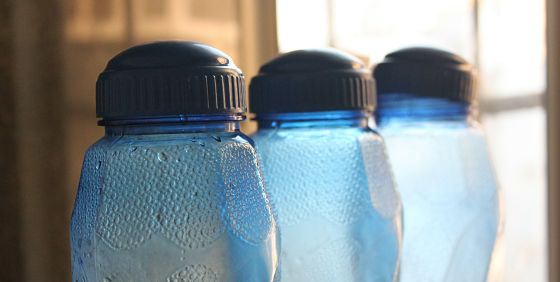Chemicals are a ubiquitous part of modern life. It is estimated that a woman is exposed to around 200 chemicals in her personal care products alone, not to mention the chemicals in cleaning products, food, building materials and the environment. We can all be more conscious of our daily chemical use, but minimising exposure is particularly important for children and teenagers, if you are planning a pregnancy or are currently pregnant. Supporting the body’s natural detoxification processes is a second important aspect of the pathway to optimal health and wellbeing.
Of particular concern are endocrine disrupting chemicals. These chemicals interfere with the normal actions of hormones and can affect a range of body functions including fertility, sexual maturation, appetite and metabolism. Endocrine disrupting chemicals are thought to play a role in the development of a range of chronic diseases including cancer, diabetes, infertility and autoimmune diseases. There are over 800 chemicals known or suspected to be capable of interfering with hormones and only a small fraction of these have been tested for safety. The use of these chemicals is largely unregulated, and action is only taken after a substance is proven to be harmful, usually after a whole generation of people has been exposed.
There are particular times during development when our bodies are more sensitive to the impacts of endocrine disrupting chemicals. Exposure to chemicals during the development of particular tissues (such as in utero, infancy and early childhood) can have permanent effects on that tissue. Tissues such as the brain and reproductive system continue developing long after birth and are sensitive to damage from chemical exposure. These chemicals also leach into the environment and are having impacts on the health, population numbers and species diversity of wildlife.
It can feel overwhelming to remove chemical laden products from our daily lives, but by slowly replacing the products we use, and changing our regular habits, it is possible. A few small shifts will drastically reduce the amount of health damaging chemicals in your body.
BPA is probably the most well known endocrine disrupting chemical, and is an essential one to remove from your life. Common exposures to BPA are plastic food containers, the lining of tins and thermal paper.
Minimise your exposure by:
~ Switching to glass, stainless steel and ceramics in the kitchen
~ Buying canned food labelled BPA free, or switch to food that is fresh, dried, frozen or in jars
~ Wash your hands after touching thermal paper including receipts, movie tickets and airline boarding passes
A quick word about BPA free plastics
Many plastic products are labelled BPA free, however it’s best to avoid these where you can. Manufacturers replace the BPA with other similar chemicals which leach into your food and may be just as harmful. There is no requirement for these products to be tested for safety. Studies have found that most plastic food containers, including those labelled BPA free, leached chemicals when exposed to common uses.
Phthalates are another class of endocrine disrupting chemical that are important to avoid. This class of chemicals are used to increase the flexibility and softness of plastics, and are widely found in common products in our homes, cars and businesses. Research studies have consistently shown that phthalates impact sperm quality by interrupting hormones and promoting cell damage through increased oxidative stress. Phthalates have also been shown to interfere with the growth of ovarian follicles by reducing oestrogen, interrupting egg development and the ability of eggs to fertilise.
The dangerous effects of phthalates on babies and children are well known, and some phthalates are banned for use in children’s toys and products in the EU, America and Australia. Unfortunately, phthalates are still found in many other places including cosmetics, perfumes, nail polish and cleaning products. These toxic chemicals may also be found in any plastic product that is soft and flexible, including yoga mats, mattresses, cushions, shower curtains and plastic food packaging.
Personal care products are one of the main sources of phthalates for most women. The Environmental Working Group has a number of guides to help you work out the least toxic options for commonly used products.
Minimise your exposure by
~ Checking your personal care products on the EWG Skin Deep database
~ The EWG also has a guide on cleaning products
~ Avoid any product with the ingredient “fragrance”. Manufacturers are not required to disclose the myriad of chemicals in fragrances and perfumes. Any time you see “fragrance” listed on a bottle you should assume it contains phthalates.
~ Choose organic food free from packaging where possible. Phthalates are also found in plastic packaging and pesticides.
Supporting Detoxification
Whilst we can minimize our exposure to toxic chemicals, it is impossible to eliminate them completely. A recent report by the U.S Public Interest Research Group found that glyphosphate, a potent ingredient in weed killers and probable carcinogen, was found in all but 1 of the 20 brands of beer and wine tested, including some organic brands. Supporting the processes by which our bodies detoxify and eliminate these chemicals is another important part of ensuring optimal health.
The liver is the main organ in which this detoxification occurs. We can support the essential work of the liver by decreasing inflammation, managing stress and promoting a diverse community of gut bacteria. Acupuncture and Chinese herbal medicine can also regulate liver function, promote proper elimination and calm stress.
Knowing what’s in the products we use in our daily lives and their potential health impacts is essential to making informed decisions. By choosing carefully what we buy, we are taking powerful steps towards protecting our health, the health of our families and of the environment.
